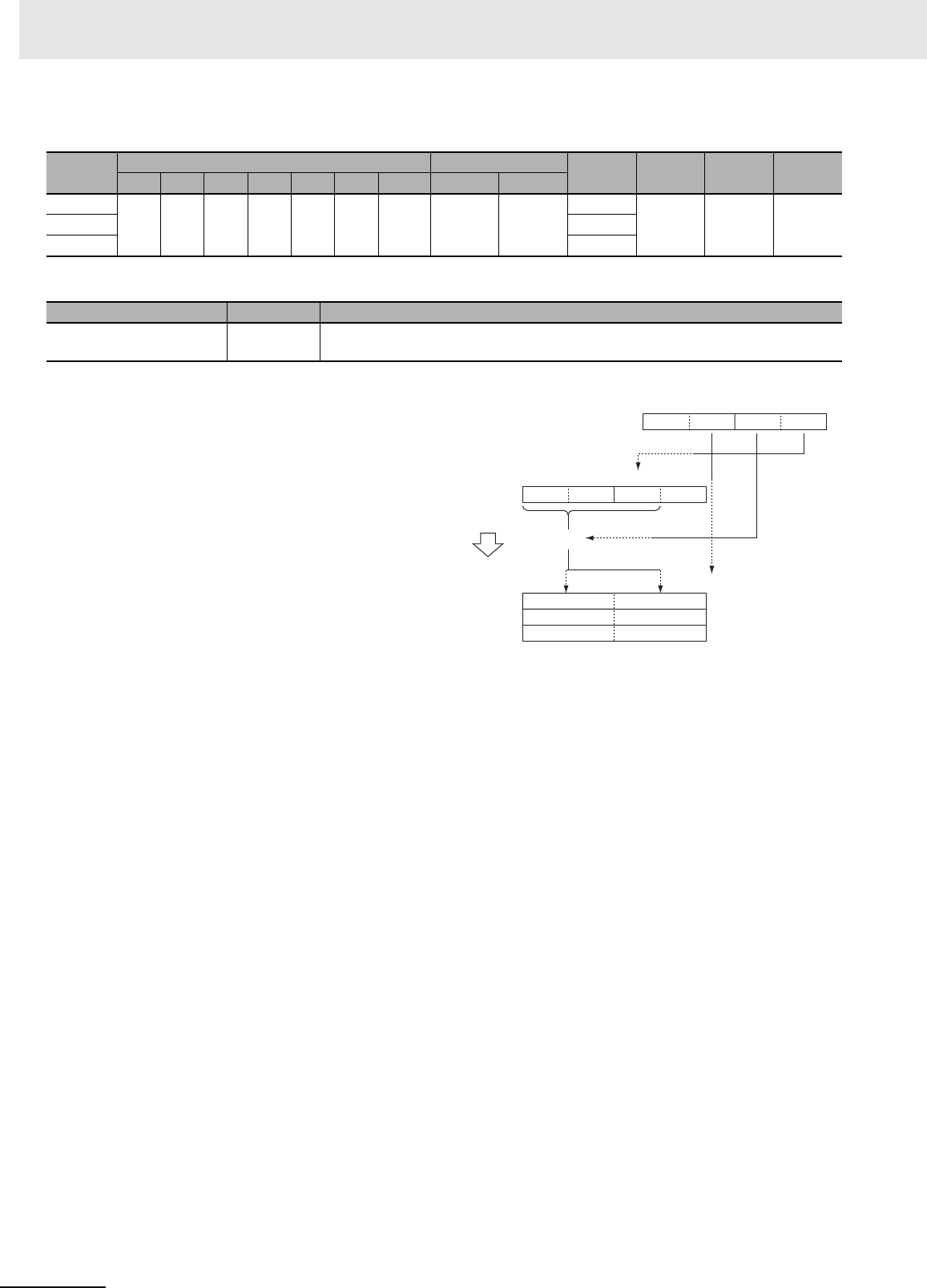
2 Instructions
2-202
CP1E CPU Unit Instructions Reference Manual(W483)
Operand Specifications
Flags
Function
Hint
• The parity bit is appended to the data to enable detection of errors when the data is transmitted. By
adding this bit, the number of bits that are 1 in the data can be indicated as odd or even, and if the
number of 1s in the received data is not similarly odd or even, it is assumed that an error has
occurred.
Precaution
• When multiple digits are specified in the number of digits to be converted (K), the digits are converted
in order from the starting conversion digit going left (returns to digit 0 after digit 3), and the conversion
results are stored in order from the output position of D going to the left word side (in units of 8 bits).
• Among the data in the conversion result output word, data in positions that are not to be output are
held.
• When converting multiple digits, take care that D+1 and D+2CH do not exceed the area.
Area
Word addresses Indirect DM addresses
Constants CF Pulse bits TR bits
CIO WR HR AR T C DM @DM *DM
S
OK OK OK OK OK OK OK OK OK
---
--- --- ---DI OK
D ---
Name Label Operation
Error Flag P_ER • ON if the content of Di is not within the specified ranges.
• OFF in all other cases.
ASC(086) treats the contents of S as 4 hexadec-
imal digits, converts the designated digit(s) of S
into their 8-bit ASCII equivalents, and writes this
data into the destination word(s) beginning with
the specified byte in D.
A parity specification (bits 12 to 15 of K) is pos-
sible in the leftmost bit of the ASCII code data,
and this can be converted to an odd or even par-
ity bit (the number of bits that are 1 of the eight
bits is adjusted to odd or even).
D
0 1/0 nm
33
S
m
321
31 32
HEX
ASCII
Di
Right (0)Left (1)
Number of
digits (n+1)
First digit to con
vert


















